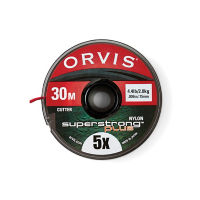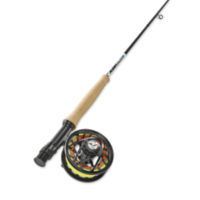Description: About Bighorn River
The most easterly of Montana's fine rivers, the Blue Ribbon waters of the Bighorn, is also the finest in terms of numbers of fish. With nearly 2,500 fish per mile at an average of 19+ inches, catching 20 to 24" browns and rainbows every day, it is no surprise the river is known for its fantastic fishing and cold water.
The section of the Bighorn in south eastern Montana is actually the last section of the river. Beginning when it flows out of the Wind River drainage out of Wyoming. The Bighorn's course is as unique as its fishing. After flowing through much of Wyoming the river flows into Bighorn Lake which is created by Yellowtail Dam. Yellowtail is a 525 foot concrete dam, that fills a remarkable 71 mile “breath taking” canyon and offers recreation for boating enthusiasts. But it isn't until the river releases from the bottom of the dam that the fishing becomes world-class. This clear and cold release creates nearly 30 miles of prime wild trout habitat. With an average of 50 degrees the aquatic bug life is truly a biologists dream. Also to mention the installation of the Afterbay Dam 1 mile below Yellowtail Dam, takes the fluctuation out of this hydroelectric dam, which is prominent in tail water fisheries. The result is constant flows year round.
As mentioned the Bighorn is arguably one of the finest streams in the state, and in the world. The high fish count per-mile is one thing, but the potential for a lifetime trophy brown or rainbow trout is very good on this river. Browns average around 16 inches and rainbows average just a touch larger. Hatches are prolific the entire year and because the Bighorn is in the southeastern corner of the state and at a lower elevation than many Montana streams it can, and does fish well, the entire year. During the different hatches it is not unusual to have 10-20 fish with in easily casting distances.
The flies of choice are on the small size 16-20’s with tippets ranging from 3x-5x fished with 8 ½ - 9 foot 4-6 weight rods.
With Montana's stream access law, the Bighorn remains a float-fishers rivers. Using a drift boat, or other floating craft is the most effective way to fish the Bighorn. Bank or wading anglers are limited by a few state owned accesses and gaining permission from landowners is difficult, mainly because it flows through the Crow Indian Reservation.
The Bighorn is the ideal river for anyone wishing to head to one destination and intimately fish one river. However, it is important to note that the Bighorn is still a natural fishery. Even though there are over several thousand fish per mile doesn't mean that fish are pushovers, quite the contrary as the Bighorn is still a technical river that requires some local knowledge and patience to fish successfully. Fortunately, as isolated as the Bighorn may seem, there are a few quality lodging options located near the premier top 3 mile section of the river.
The river averages 150-250 feet in width with flows average in the 2000-3000 Cubic Feet Per Second (CFS) range. Prime flows for the Bighorn range from 2,000 to 5,000 CFS. With broad riffles followed by deep pools. The landscape is equally impressive with rolling plains, sparsely places cottonwoods and willows are the backdrop for this section. Gravel and grass islands, with the oh-so inviting side-channels are found throughout the river. These islands create unique riffle corners, side channels and drop offs that always yield some great fish and great memories. The sections to float are Afterbay to Three Mile access, which is the most popular and premier section of the river. The second section is Three Mile to Bighorn, which is about a ten mile float, which offers great fishing in a more secluded setting. The last section, Bighorn to Mallards, is the start of the motorized craft area. That does somewhat retract from the solitude of the fly fishing experience. The fish numbers are smaller due to the water quality by tributary run off as well as irrigation returned ditches on this lower section of the river. The most popular float is Afterbay to Bighorn access.
Billings Montana is a the nearest major city which is a 90 minute drive and nearest major airport with commercial service. There is a small airstrip in Ft. Smith that can accommodate private planes.
The Bighorn truly is one of the great fisheries in the world. If offers a fly fisherperson the experience of a life time. This river always lives up to the legendary status that it has become.
Nearest Airport:
Billings Logan International Airport (BIL)
Hatches:
Midges
BWO
BAetis
Need any more information just give us a call :
Bighorn River Resort
Nick Forrester
800-665-3799
________________________________________
HOT FLY PATTERNS
NYMPHS
#16 Pink Soft Hackle Sowbug; #18 Olive Flashback Pheasant Tail; #14, #16 Soft Hackle Sowbug; #16 Jelly Bean (sowbug); #16 Orange Scud; #14, #14 Ray Charles (grey or tan)
DRY FLIES
#18-24 Midges
16-20 BWO
STREAMERS
#10 Black Leech; #6 Thin Mint Wooley Bugger (Hale's favorite); #6 Olive Zonker; #4
Best Time to Fish:
Late Morning to late Afternoon
Best Stretch:
Afterbay to 13 Mile (Bighorn)
3 Mile to Bighorn
Best Access:
3 Mile
3 Mile
13 Mile






